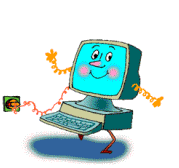WEEK 3 : COMPUTER NETWORKING
DEFINITION of COMPUTER NETWORK 💢

computer network is a collection of computers and other hardware devices so that network users can share hardware, software, data and they can communicate with each other electronically.
types of networks
Local Area Network (LAN)
- - covers relatively small geographical area such as home, school and office building
- - client/server network are examples of LAN
- - allows file exchange, emails, printers sharing or accessing the internet.
- - Network designed to service a metropolitan area, a city or a country.
- - owned or provided by a city or network provider
- - for local peoples access to internet
Wide Area Network (WAN)
- - network that covers large / broad geographical area
- - exp : telecommunications network that links across metropolitan, regional, or national boundaries using private or public network transport
- -internet : world's largest WAN
NETWORK COMPONENTS
HOST/END NOTES
- -refers to the data source and the data destination.
- -example : personal computers & ATM
- -for transmitting data and control signals
- -responsible for sending electric or signal through specific media. it can be bounded (wired) or wireless media.








Comments
Post a Comment